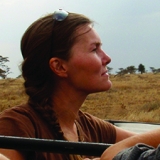The overarching purpose of this discussion paper is to provide a starting point for consideration of the implications of changing households’ access to forests and forest products and to changing management of lands outside of reserves. We study five communities located in and around the Amani Nature Reserve and the Nilo Forest Reserve, within the broader landscape of the biodiversity hot spot of Tanzania’s Eastern Arc, the East and West Usambara Mountains. Based on our 2015 survey of just over 300 households, we document how villagers’ own landholdings, access to forest land, and understanding of the links between forests and ecosystem services affect their willingness to cooperate with government efforts to improve forest quality. We consider the benefits that households get from nearby, albeit often degraded, forest lands, and their perceptions on whether it would be of benefit to protect a larger area of forest land to provide ecosystem services for the broader landscape. We explore villagers’ attitudes to possible government efforts to reduce forest loss and fragmentation.
Rural Households’ Forest Use in Fragmented Forest Landscapes
EfD Authors
Publication reference
H. Jo Albers, Razack Lokina, Elizabeth J.Z. Robinson & Victoria Kreinbrink. Rural Households’ Forest Use in Fragmented Forest Landscapes. An Example from Tanzania’s Usambara Ecosystem. EfD Discussion Paper Series DP 19-20.


